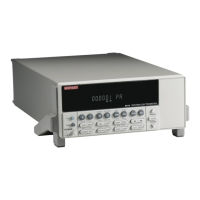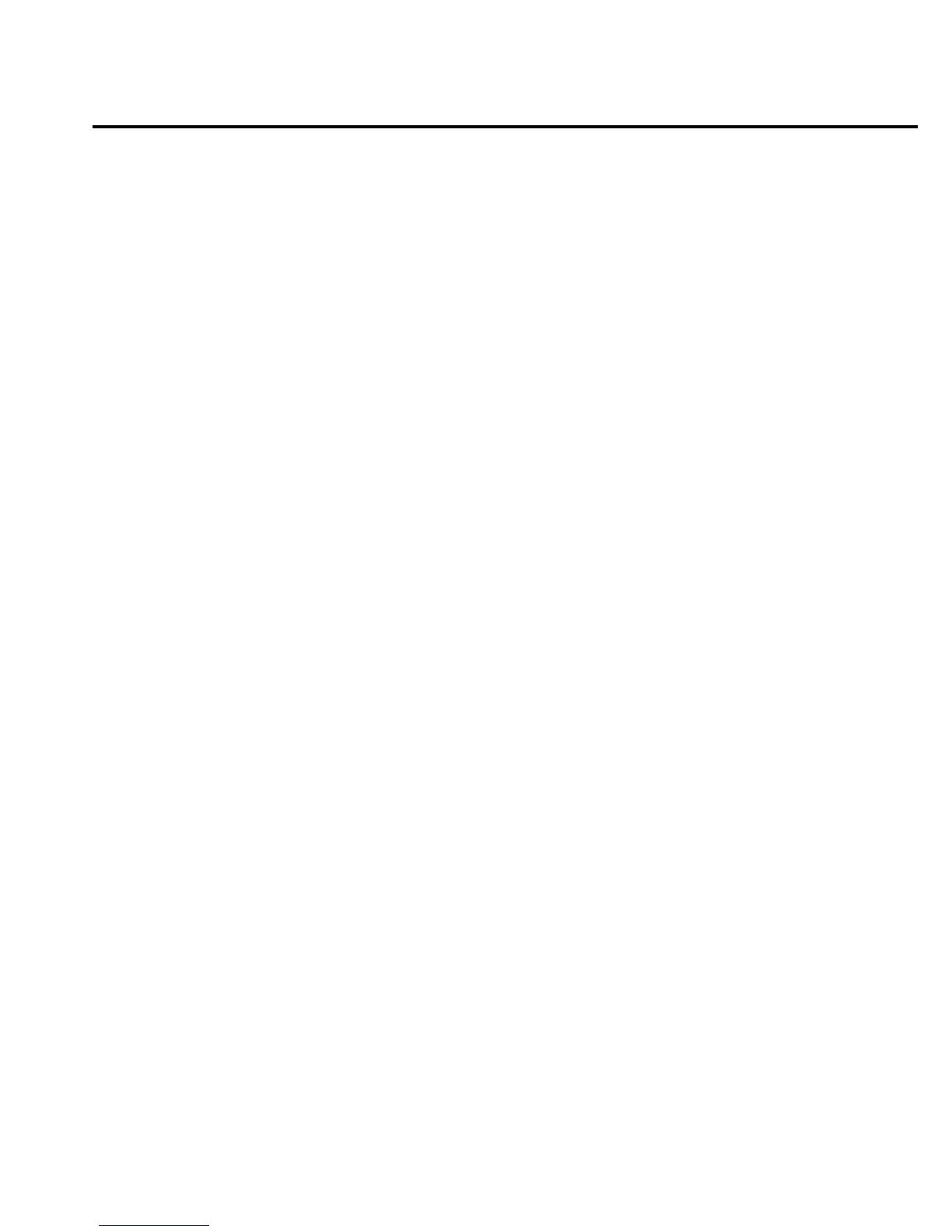DISPlay, FORMat, and SYSTem 16-7
Bits 7 and 8 (Measure) - Provides measurement status:
Bit 9 (Zero Check) - Set to 1 when zero check is enabled.
Bit 10 (Zero Correct) - Set to 1 when zero correct is enabled.
Example — The ASCII data string in Figure 16-1 contains all three data elements. The status
value of 138 has a binary equivalent of 01001010, which indicates that bits B1, B3, and B7 are
set. Therefore, the reading is 1.04056uA with null (REL) and the AVG filter enabled. The read-
ing was taken 223.6299 seconds after the instrument was turned on.
C) FORMat:BORDer <name>
Parameters NORMal = Normal byte order for IEEE-754 binary format
SWAPped = Reverse byte order for IEEE-754 binary format
For normal byte order, the data format for each element is sent as follows:
Byte 1 Byte 2 Byte 3 Byte 4
For reverse byte order, data is sent as follows:
Byte 4 Byte 3 Byte 2 Byte 1
The “#0” header (see Figure 16-2) is not affected by this command. The header is always sent
at the beginning of the data string for each measurement conversion.
The ASCII data format can only be sent in the normal byte order. The SWAPped selection is
ignored when the ASCII format is selected.
NOTE The SWAPped byte order must be used when transmitting binary data to any IBM PC.
Bit 8 Bit 7
0 0 Voltage function selected
0 1 Current function selected
1 0 Resistance function selected
1 1 Charge function selected

